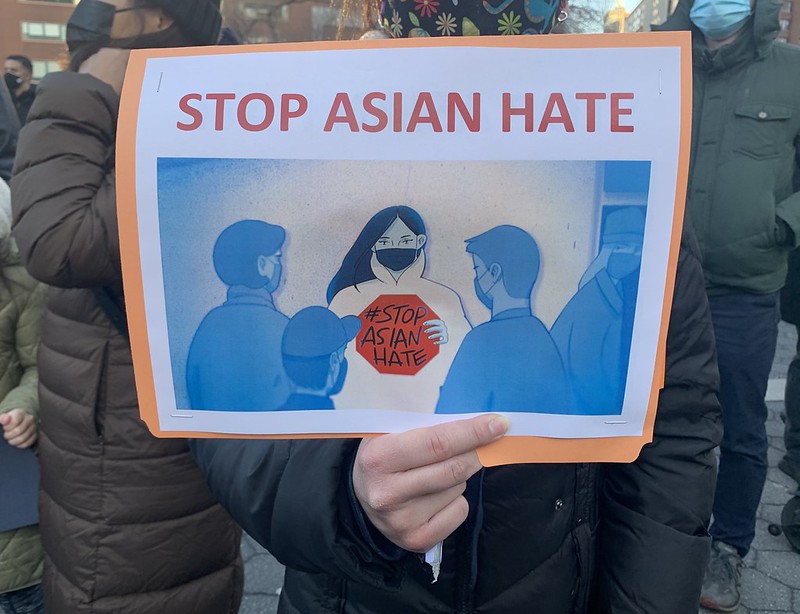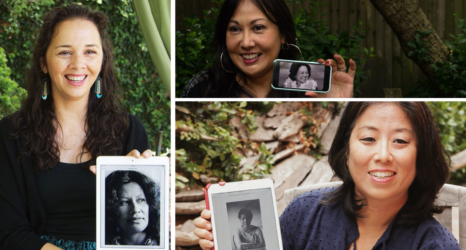
TimesUp recently released two new studies: It’s Time to Care outlines the economic case for investing $775 billion in care infrastructure for the elderly and children, a proposal President Biden is discussing as a means to creating a U.S. economic recovery; and From Ideal Worker to Ideal Workplace offers a roadmap for creating more fair and dignified U.S. workplaces.
Ms. reporter Lisa Rabasca Roepe spoke to CEO of Time’s Up Tina Tchen about why investing in care infrastructure, which would create millions of jobs for the disproportionate number of women hit by the pandemic, is just as important as building roads and bridges; why the work women do has historically been undervalued; and the increased sexual harassment and violence against Asian American women.
Lisa Rabasca Roepe: Over 2.3 million women have dropped out of the labor force between February 2020 and February 2021 (compared to 1.8 million men over the same time period).
Investing in a robust care infrastructure could help fix this problem on two fronts. First, by creating more jobs for women in the care sector, but also by giving women who want to return to work more options for finding childcare. Why it’s so important to make this type of investment, particularly now?
Tina Tchen: Investing in a comprehensive caregiving infrastructure in this country will stimulate the economy at a time when we so desperately need it. We’re talking about investments that are not just affordable childcare, but also school-aged care and self care, like paid leave for workers who need to take time off when they themselves are ill or when their family needs them at home.
We did an economic analysis at TimesUp. If you take what was proposed during the Biden-Harris campaign, which was a $775-billion-a-year investment for 10 years, you can create 2 million jobs a year. You can stimulate $220 billion of economic activity that gets generated by the creation of those jobs. An overwhelming number of those jobs are in the hospitality sector or front line workers that you know have taken such a hit during the pandemic. That doesn’t even count the kind of economic stimulation that occurs because creating these jobs will allow someone else to take a job and to go back to work.
We know at least half the women leaving the work force are telling pollsters they’re leaving because of caregiving responsibility. We know that employers are feeling the pinch. The Wall Street Journal actually ran several articles noting manufacturers who told the Journal they can’t fill the full day of work on their manufacturing floors because their workers aren’t showing up because they have caregiving responsibilities.
Roepe: Why is the work that women do as either paid or unpaid caregivers been so undervalued for so many years?
Tchen: This is not a new problem. It goes back to a time when women stayed home to care for children and men went out to hunt and gather. The lack of labor protections for caregivers actually dates back to slavery when there was no pay for caregivers. Women caregivers were excluded in the 1920s and 1930s from the labor protections that were passed because it was viewed as labor that didn’t need to be paid for. That’s the legacy we need to overcome.
In this country, we have this view that caregiving is a problem that workers have to figure out themselves. We do not think of caregiving as a public utility like so many other countries do. Other countries invest in making sure there’s a network of affordable childcare centers. We don’t see workers having access to affordable caregiving as essential to getting a worker to their job. It’s essential as making sure they have a road they can drive on it and a utility pole that’s delivering electricity to their homes.
Giving workers access to affordable caregiving is as essential as making sure they have a road they can drive on it and a utility pole that’s delivering electricity to their homes.
Roepe: There is a lot of discussion about the infrastructure bill and taking care of our bridges and roads and now we’re talking about creating a caregiving infrastructure to take care of our young and our elderly. Could you elaborate more on the similarities of those two infrastructures?
Tchen: One of the reasons we’re talking about the infrastructure bill right now is to get the economy going again and to invest in the kinds of projects that will put Americans back to work. Because if we invest in those kinds of jobs, those workers will spend what they earn and further stimulate the economy.
Caregiving jobs will also stimulate the economy. If we only invest in roads and bridges without investing in caregiving, a lot of workers who are men and women alike, who want to take those roads and bridges jobs will be unable to do so because they don’t have caregiving. If all we do is to invest in surface structure infrastructure without also investing in caregiving infrastructure, we are actually going to hamper the ability to restart the economy. And we will do it by leaving especially women and women of color behind, because women of color are overrepresented in caregiving jobs and underrepresented in construction jobs.
Roepe: What effect would investing in caregiving have on closing the gender wage gap?
Tchen: We just released new research on how to address the causes of the gender pay gap. It’s not just an attitude change that’s needed but how do we reorganize the way our workplaces address the barriers to women getting equal pay. For instance, not having designated caregiving structures at work are holding women back and not allowing them to progress in their job careers, which is a huge contributor to the pay gap. Also not having clear scheduling and work expectations.
For generations, we’ve been working with what we call an ‘ideal worker’ scenario. It’s somebody who can stay at work devotedly from 9 a.m. to 5 p.m., who doesn’t have responsibilities at home, who can arrange their schedule to whenever the employer needs them to work. This is the way work has been organized since the turn of the industrial revolution.
Now we need to shift to a new paradigm of an ideal workplace. The kind of workplace culture we want is welcoming of all workers and rewards things like flexibility, creativity and productivity.
Roepe: A lot of people associate Time’s Up with #MeToo. But I know that your work also includes creating equity and power for women in the workplace. Can you talk a bit about that work?
Tchen: Our first initiative was the Time’s Up Legal Defense Fund, managed by the National Women’s Law Center. Because we were not legal experts, we knew we needed an established organization to run and make the legal decisions about what cases to take and how to counsel the woman who called. We continue to work for survivor justice.
Our other mission is to work for a world where sexual harassment doesn’t happen in the first place, and making sure that workplaces are truly safe and dignified for all workers, whether that’s working on equal pay, working on caregiving as a priority, or working on issues of representation and structural barriers to women, LGBTQ and disabled workers and people of color from succeeding in the workplace.

Roepe: Does Time’s Up have any plans to respond to the increased sexual harassment and violence against Asian women?
Tchen: It is something that we all need to be really aware of. There is a direct link between misogynistic beliefs and the exploitation of women to radicalization of young white men to white supremacy and to the people who are protesting in front of abortion clinics to what we saw on January 6 at the Capitol and what we saw in Atlanta on March 16. You know, there’s a direct through line through all of the accidents, and we as a country really need to see those linkages and begin to deal with the domestic threats that we have in our country.
Roepe: What do you think is the hardest part about trying to change the culture of workplaces?
Tchen: I think that for too long we have tried to think of it as one thing and tried to isolate it and solve one part of the problem without understanding its linkages. For example, for a long time people looked at equal pay. But it goes beyond pay to promotion and recruitment, how to value work, who is promoted into leadership.
With sexual harassment, companies think they can just establish policies and do some training and solve the problem. But unless you change the power structure of the company and the overall culture, that’s not going to change the dynamics in the workforce.
Up next:





